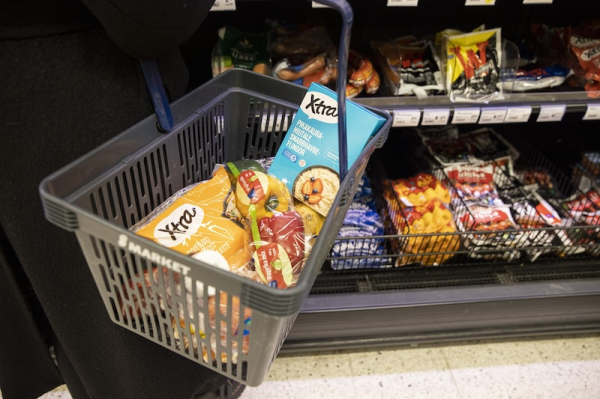Mild food price rise expected in 2025 as global tensions cloud market outlook

Person grocery shopping. LEHTIKUVA
- Next Article Finland tightens crypto rules under MiCA
Food prices in Finland are expected to rise modestly this year and next, according to a forecast by Pellervo Economic Research Institute (PTT). The outlook is driven by strong demand for dairy products, but global trade tensions and inflationary pressures are adding uncertainty to the food market.
PTT expects food prices to increase by 2.5 percent in 2025, slightly above the projected general inflation rate.
The rise will be led by increased costs in food processing and a gradual recovery in consumer purchasing power. Prices are forecast to rise more slowly in 2026.
Early in the year, higher prices for coffee and chocolate have kept inflation elevated. Price pressures are also building in dairy and beef, while promotional pricing by retailers may limit the scale of increases.
“Food price inflation is slower in Finland than the EU average. In Sweden, prices rose nearly 4 percent in February, and in Denmark almost 6 percent year-on-year,” said Sari Forsman-Hugg, Research Director at PTT.
Dairy demand drives higher producer prices
Demand for milk continues to grow globally, especially in South and East Asia. In the EU, total milk consumption remains steady as rising demand for processed products offsets declining consumption of liquid milk.
“Producer prices have responded to this demand. In Finland, milk prices began climbing last autumn and are now significantly higher than last year’s average,” said Päivi Kujala, Senior Agricultural Economist at PTT.
Dairy remains Finland’s leading export sector in food. However, the EU’s strong reliance on the US as a market for cheese makes the sector vulnerable to trade policy shifts. Tariffs introduced by the US could affect EU-wide exports and weaken growth in Finland indirectly.
According to Pekka Kinnunen, Agricultural Economist at PTT, increasing geopolitical tensions and the tariff policy of the United States are key factors weighing on the outlook.
“Tariffs and counter-tariffs slow growth and hurt agricultural and food trade. The uncertainty in global trade makes forecasts more difficult,” Kinnunen said.
While Finland’s direct trade exposure to the US is limited, the effects would mostly come via the EU internal market. Finnish food exports to the US are focused on cheese and alcohol, while imports include fruit and beverages.
Meat and grain trends mixed
Beef consumption has increased in Finland, as it remains relatively cheaper than other meat types. Supply constraints are expected in the longer term due to a declining cattle population. Yet beef prices are forecast to rise only slightly.
“Despite tightening supply, the price increase is limited because beef production is closely tied to the dairy sector. Only a small share of beef comes from specialised beef cattle,” said Mauri Yli-Liipola, Agricultural Economist at PTT.
Grain prices are expected to remain stable in the near term, but the war in Ukraine continues to pose a major risk. Any major developments in the conflict could immediately impact global grain prices.
Entrepreneurial income in agriculture rising
Entrepreneurial income in Finnish agriculture is set to increase this year compared to 2024, driven by higher milk prices and easing costs. Feed prices in particular are expected to decline, supporting overall profitability in the livestock sector.
PTT noted that while agricultural incomes are improving, they remain around the average of the past five years.
Food exports are still growing, although at a slower pace than outlined in the Finnish government’s target to double food exports. Dairy products remain the strongest performing category.
PTT’s full forecast can be read on its website.
HT
- Next Article Finland tightens crypto rules under MiCA
Source: www.helsinkitimes.fi
